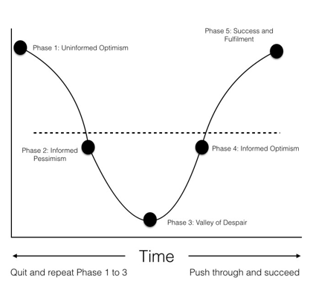Acquiring a new customer is anywhere from five to 25 times more expensive than retaining an existing one.¹
Increasing customer retention rates by 5% increases profits by 25% to 95%.²
The most profitable and effective businesses ensures that marketing is aligned at every stage of their customer’s journey.
This is known as customer success.
Read up more about the elements of customer success, check out Lincoln Murphy’s work at Sixteen Ventures: https://sixteenventures.com/elements-customer-success-management.
The businesses that integrate customer success into their processes grow faster because their customers:
- Stay longer
- Buy more
- Advocate for you.
So, how do you actually utilise the tools within HubSpot to make customer success part of your growth strategy?
The below list is by no means exhaustive. It aims to give you some ideas of how you can apply some of the features.
What is customer success?
First, customer success is not the same as customer service. Although customer success and customer service of course need to work together and share data, there is a different approach.
Customer service is a reactive, short-term perspective, that focuses on driving customer satisfaction.
It’s usually owned by a single function, is a cost-centre, and focuses on resolving issues.
Customer success is a long term perspective, it focuses on generating revenue, driving customer value from your product, and goal achievement.
It’s proactive and it's a cross-team effort.
Implementing customer success:
Here are some example ways you could be utilising the tools in HubSpot for customer success. Your strategy should be tailored to your business.
1. Voice of customer researchI believe sales, marketing, services, account management, product, and leadership should be making Voice of Customer part of their workstream. The main reason is that your customers are your best source of ideas, but you need a balanced view that will only come from a variety of different interviewers and interviewees.
However, you need processes in place to empower people to pick up the phone and have a chat with the customer. You don’t want everyone calling the same customer while others haven’t been spoken to.
Once you’ve decided internally who is going to run them, how often you’re going to manage your Voice of Customer research calls:
- Use HubSpot tasks to allocate when a contact hasn’t had a VoC call for, say six months.
- Create a HubSpot Playbook to give everyone a process and questions to follow / ideas. The questions should be deliberately open-ended. You will find some prospects talk about product issues, others talk strategy. All points of view are valuable and can provide sources of content, inspiration and improvement. Specify in your playbook how to deal with customer frustrations or technical questions about the product - they will come up and it's ok to not know the answer instantly.
- Use HubSpot's call tracking to easily share feedback. This visibility and transparency helps all areas of the business to build stronger processes.
- Assign someone to own the VoC feedback sessions. Usually this should be a senior marketer - they will be able to aggregate feedback from all the sources. This can then be used to ensure product market fit, hone your ideal customer profile, ensure alignment with demand generation activities, and ensure the wider organisation has access to this information in an easily digestible format.
- Have a VoC launch process, communicate this to you team, and continually optimise your VoC processes, updating your process playbook.
2. Bring onboarding into HubSpot
Most B2B purchases are far more emotional than B2C. For a B2C purchase, a bad buy might means that we disappoint ourselves for a bit, but with a B2B purchase - it's your reputation, career and future.
For most B2B purchasing decisions, the lead will go on an emotional rollercoaster when they are onboarded that resembles the the hero's journey:
- They'll be optimistic your solution will solve their headaches
- They'll realise it's not that easy
- They'll feel like they've made a huge mistake
- They'll see how it's going to work
- They'll get the benefits you initially promised.

You can reduce the risk of quit and repeat, lower the time, and the intensity that your customers are in the Valley of Despair through better customer onboarding.
You need to build trust and authority.
- What are the key milestones you need your customers to achieve at each stage? Bring your wider team into this part of the process
- What does success look like for your customer?
Using a ticketing pipeline within HubSpot, a customer success onboarding pipeline could look like this:
- Contract signed
- Customer ticketing portal set up (A HubSpot tool or try Portalis)
- Customer accountabilities agreed / PID
- Kick off call
- Implementation / configuration
- Case study
- Renewals / upsell pipeline
3. Find trends
Review closed won, closed lost and qualified out leads. Are there trends in the source, customer profile and journey? Which content is converting? Which content leads prospects to unsubscribe?
Using the HubSpot reporting tools, you can test hypotheses and gain insights to strengthen your knowledge of and refine your ideal customer profile. This makes for a more repeatable and scalable marketing process.
Want to up your customer success strategy?
Subscribe to the elcap newsletter. We publish a monthly newsletter that shares best practices, ideas and examples of what we've implemented for our clients.
Subscribe to elcap's monthly newsletter
Source: 1 & 2 https://hbr.org/2014/10/the-value-of-keeping-the-right-customers
Emily
Emily plans and manages the organic, paid and social media marketing for elcap's clients, as well as HubSpot implementations.



